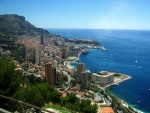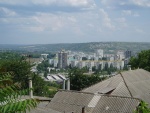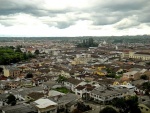Vasca/eraldia
Vascan heraldry originally followed the tradition of Iberian heraldry, a constituent part of the Latin heraldry family. In the late 14th century, it came under significant influence from English heraldry. Vascan heraldry then evolved, arriving in the 16th century with many specific national features, achieving a peak that was marked by the ordinances of Prinse Alesandro II, which defined strict heraldic rules and established the statutes for the officers of arms.
Heraldry declined in Vasca from the 17th to the 19th century. However, in the late 19th century and especially in the 20th century, it had a strong revival, mainly driven by the high development of the civic, corporate and military heraldry.
La Scermo de Vasca
Arms of Counties
All counties within Vasca have coats of arms; these are often intertwined with local traditions.
BejetaThe county of Bejeta is the western-most county. The county seat and largest city is Raial. The current governor is Contesa Abigela Mendosa. Being home to the second largest inland bay, Bejeta enjoys a healthy sea-trade economy and fishing industry. BragaThe county of Braga is the second smallest county in Vasca. Located on the north-eastern corner of the island, it is bordered by the counties Delenio, and la Feudo de Mosta. The county seat and largest city is Beria. The current governor is Marci Gustavo Adan Zabala. Braga is home to a robust tourist area, but is also where most ground forces of the Vascan military train. DelenioFranconiaGorosMasada |
La feudo de MostaOrdinoLa RocaSanatVerona |
Arms of Cities and Towns
The eight major cities of Vasca.
Porto BaiaSituated on the eastern side of the island, nearest to mainland Europe, Porto Baia (once called Viscaria) has historically been the trade center of Vasca, as well as being strategically important. Vasca having been occupied and ruled by French, British, Portuguese, and briefly, the Umayyads, architecture in Porto Baia is diverse and varied. As the capital of Vasca, Porto Baia houses the parliament, the main castel reial and several foreign embassies. Marapas
Directly west of Porto Baia, on the coast and the seat of the Verona county, Marapas (traditionally called "La pas de la Mar", or 'Peace of the Sea') is the busiest commercial port in the country. It is also home to the most resorts on the island, hosting no fewer than 20. OmiedaThis city was once home to forces loyal to the Umayyad Caliphate, hence the name of the city. However, it is also thought of as the cultural center of Vascan life. Many museums and art houses are headquartered here, as well as numerous theaters which preform classical and contemporary plays.  Navaro is a city in the county of Masada, Vasca and a popular tourist destination on the northern coast of the main island with about 11,000 inhabitants. Navaro is well known for its traditional festa de autono, a kind of historically influenced celebration of carnival, where tradition is followed, from wearing costumes with carved wooden masks to dancing in circles of family. Navaro also boasts a picturesque, traditional, medieval town center. The traditional town Navaro is the proud owner of the world's longest wine-making grape-crushing-barrel in use. Navaro is a city in the county of Masada, Vasca and a popular tourist destination on the northern coast of the main island with about 11,000 inhabitants. Navaro is well known for its traditional festa de autono, a kind of historically influenced celebration of carnival, where tradition is followed, from wearing costumes with carved wooden masks to dancing in circles of family. Navaro also boasts a picturesque, traditional, medieval town center. The traditional town Navaro is the proud owner of the world's longest wine-making grape-crushing-barrel in use.
|
BeriaAcitaCapo ArenaRaialMuch of Raial is barren and unsuitable for agriculture. This is reflected in its coat of arms. Much of the county of Bejeta is uninhabited and wild. However, Raial is populated and thought of as a geographically strategic port, and as such is home to the Rejimento de la Aira. |
Arms of Nobility
La familia Eneco
Duxia
Mixel Gilerma Roberta Eneco de Vilamina
La familia Ilbira
Marci de Ilbira
La familia Martin
One of the most common surnames in Europe. The Marci de Martin traditionally serves as the ambassador to France and Andorra.
Jan Patric Martin
La familia Najera
Duxia
Omar Gonzalo Najera
La familia Ramiro
Marci de Ramiro
La familia Sanxo
Marci de Sanxo


























